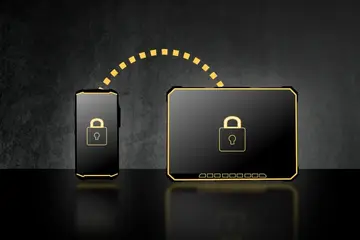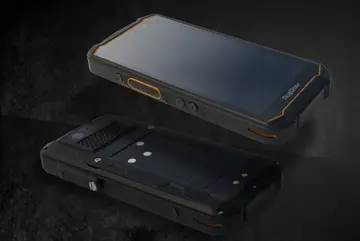Improvements introduced on Mission Critical (MC) communication over LTE
LTE has been defined as the future of Mission Critical (MC) communication. However, some enhancements were required to guarantee the satisfaction of all requirements.
Among the requirements:
- End to end encryption,
- group communication,
- priorities and pre-emption
All requirements have been met with the introduction of dedicated MCPTX apps.
MC communication End to end encryption
End-to-end encryption (E2EE) is a method of secure communication that provides the gold standard for protecting communication. This is achieved by using a Mission Critical dedicated app.
What does it do? An MC dedicated app makes the communication encrypted via an encryption key at source and decrypted once it reaches the recipient’s device.
This prevents third parties from accessing data while it's transferred from one end system or device to another.
In this way, the only people who can access the data are the sender and the intended recipient(s) – no one else. Neither hackers nor unwanted third parties can access the encrypted data on the server.
For instance, a plain text message gets encrypted at one end and gets decrypted only after reaching the recipient's device.
Group communication
Group communication has been at the core of two-way radio communication and it is now a requirement that, thanks to increased data transfer speed, is achievable also via LTE. This, once again, is obtained via a MC dedicated apps such as MotorolaSolutions Wave and TASSTA T.Flex that allow PTT via network; with the push of a button a user is able to reach out to hundreds of other users at once.
Priorities and pre-emption
These elements are related to network capability and server access, especially in situations when a commercial network is used for public emergency service.
With Priority we intend the ability of the network to allow a user to take precedence over the resources of another user. This is extremely important when emergency services are running on a public network.
During congested times, a police officer using phone access for emergency communication has priority over a private citizen. While a private citizen might have difficulty accessing the server, the police officer, having priority, will always be able to contact his/her control room.
To support these processes, the network set up Pre-Emptions. This is its capability to take over resources from other users with lower priority access when there are no free resources available.
RugGear and emergency communication
RugGear's devices have been certified by several MCPTT apps and guarantee flowless communication in the most challenging settings thanks to rugged credentials and powerful loudspeakers.
Certified IP68 and Mil-Std-810 G and H, our devices can survive the most challenging environments and loudspeakers up to 105 dB will always allow efficient communication.
Do you want to find out how we can help make your communication more efficient, get in touch.


